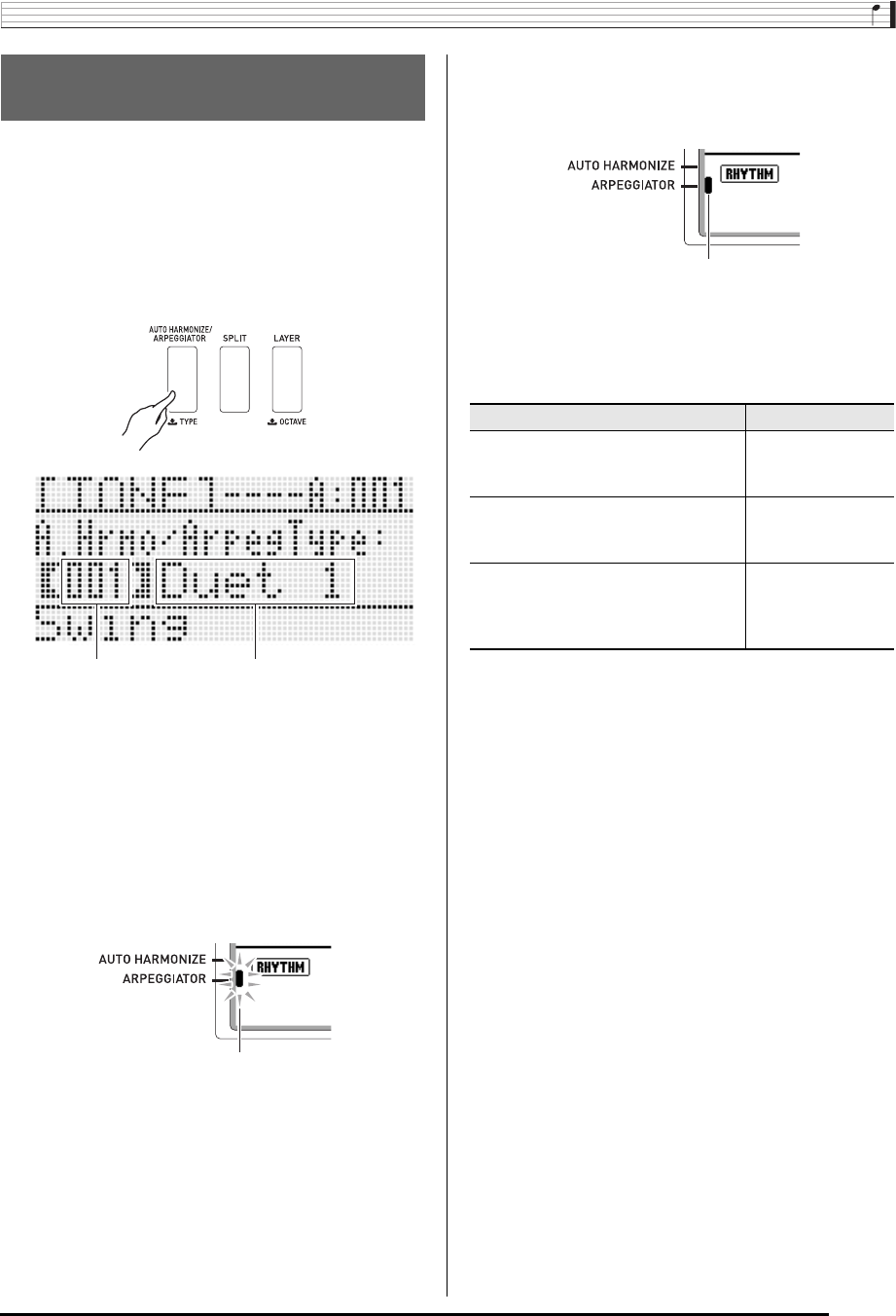
Selecting and Playing a Tone
E-23
With the arpeggiator, you can play various arpeggios and
other phrases automatically by simply pressing keys on the
keyboard. You can select from a number of different
arpeggiator options, including playing arpeggios from a chord,
playing various phrases automatically, and more.
1.
Hold down the R-18 (AUTO HARMONIZE/
ARPEGGIATOR) button until the type selection
screen shown below appears on the display.
2.
Use the dial or R-14 (–, +) buttons to select the
arpeggiator type you want to use.
• You can select one of the arpeggiator types (013
through 162). Refer to the separate “Appendix” for
detailed information about supported arpeggiator types.
• When selecting the arpeggiator type, you can assign
the recommended tone for the currently displayed type
as the keyboard tone, by holding down the R-18 (AUTO
HARMONIZE/ARPEGGIATOR) button until a pointer
indicator starts to flash on the display next to
ARPEGGIATOR.
• For information about type number 001 through 012,
see “Using Auto Harmonize” (page E-28).
3.
Press the R-15 (EXIT) button.
• This exits the type selection screen.
4.
Press the R-18 (AUTO HARMONIZE/
ARPEGGIATOR) button.
• This causes a pointer indicator to appear on the display
next to ARPEGGIATOR.
5.
Configure arpeggiator settings as required.
• The settings you can configure are described in the
table below. For information about how to configure
settings, see “To change the setting of a function menu
item” (page E-96).
6.
On the keyboard, play a chord or a single note.
• Arpeggio is played in accordance with the currently
selected arpeggiator type and the note(s) you play.
7.
To turn off the arpeggiator, press the R-18
(AUTO HARMONIZE/ARPEGGIATOR) button
again.
• This causes the pointer indicator next to
ARPEGGIATOR to disappear from the display.
Playing Arpeggio Phrases
Automatically (Arpeggiator)
Type number Type name
Flashing
For information about this setting: Go here:
Whether arpeggio should be played
while keyboard keys are depressed or
after the keys are released
ArpegHold
(Arpeggiator Hold)
(page E-97)
The number of times arpeggio is
played within one beat
ArpegSpeed
(Arpeggiator
Speed) (page E-98)
When the keyboard is split between
two tones, whether arpeggio should
be played when UPPER keyboard or
LOWER keyboard keys are pressed
ArpegPart
(Arpeggiator Part)
(page E-98)
lit


















